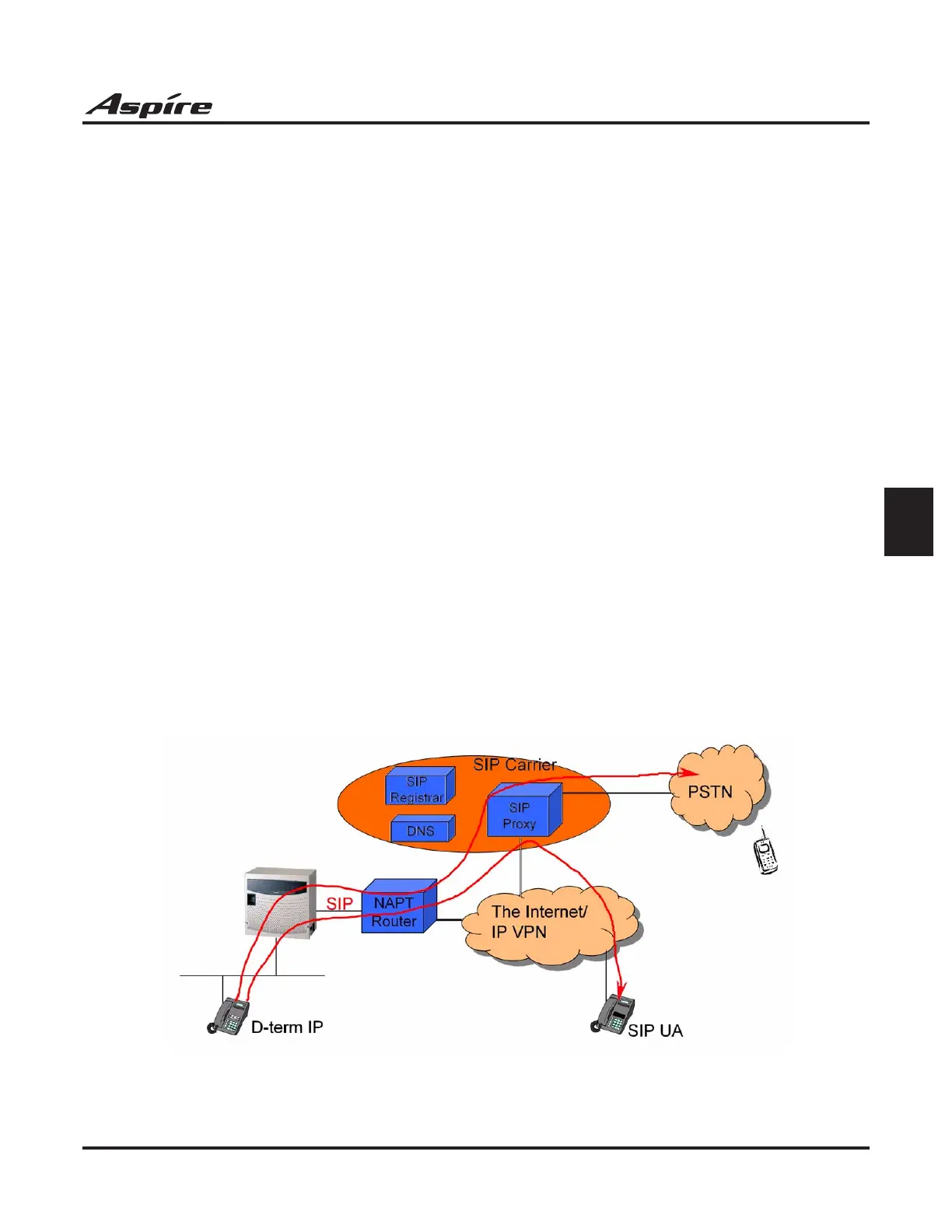Section 3: Features
Product Description 203
3
Release Link of Media Gateway Channels
When a trunk from Site A rings an extension in Site B, if Site B answers the call and then transfers
it back to an extension in Site A, the following occurs:
● On the initial call, there is one media gateway channel used on each site.
● When Site B places the call on hold and transfers it to Site A, another media gateway channel
is used in Site B. When Site A answers the call, all the media gateway channels are released.
The release of the media gateway channels is automatic and no programming is required for this
operation.
Use of SIP Protocol Available (* Limited Feature Release)
Contact your NEC Sales Representative for details on the current release status of the
SIP feature.
With this software, the system can now use SIP with the VoIP feature. Session Initiation Protocol
(SIP) is a signaling protocol for setting up sessions between one or more clients. The protocol ini-
tiates call setup, routing, authentication and other feature messages to endpoints within an IP
domain. It is currently the leading signaling protocol for Voice Over IP, gradually replacing H.323.
The Aspire system can now support the following:
● IP Trunk : H.323 Trunks / SIP Trunks
● IP Extension : D-term IP / H.323 Extensions / SIP Extensions
Support for SIP extensions is the same as H.323 telephones.
● IP Networking : Networking over H.323
These protocol can be used simultaneously.
SIP trunks are used for making a simple IP networking like H.323 IP trunk inter-connection with
Program 10-23.
If a common carrier supports SIP, then the Aspire can connect the SIP Carrier and outgoing calls to
the PSTN network and the common IP network using an Aspire SIP trunk.

